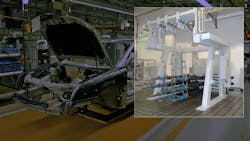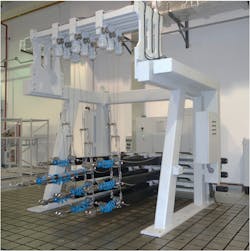On-Call Reliability from Electric Test Device
Automotive test engineers need tools for a wide variety of fatigue and strength tests. For automotive manufacturers, reducing the cost of testing is always a benefit. For test lab managers, ensuring test equipment is constantly being used leads to more profitable operations. And for tier suppliers, reducing (or eliminating) unplanned downtime and maintenance helps to meet OEMs’ schedules.
Hydraulic test devices have been the platform of choice for a wide array of automotive testing. In recent years, however, electric test devices have become advanced enough to compete with their hydraulic counterparts.
Unplanned Maintenance
More and more auto test engineers are moving away from the complex infrastructure, higher maintenance and risk of leaks posed by hydraulic test devices. Whether these engineers are upgrading technology or expanding operations, they are weighing several factors such as the routines associated with hydraulics and concerns about safety.
Some test labs and automakers note that younger workers can be unfamiliar with the challenges posed by hydraulics and the maintenance they require. Some workers lack practical experience with hydraulic systems. This unfamiliarity can extend downtime.
Test managers want to know their test systems will reliably place a cyclical load or on a specimen.
The Volkswagen plant in Shanghai recently began questioning the cost of its aging hydraulic test equipment, which has constantly required increased maintenance on a complex cooling tower, filters, seals and dedicated pumps. At Shanghai VW, test engineers used hydraulic tests for checking the strength of seat assemblies.
EMATS and similar devices provide an alternative to traditional hydraulic or pneumatic actuation and include one or several electro-mechanical actuators with a matched motor drive control cabinet and a real-time test controller.
If a company is building a new facility and must supply the pump and infrastructure, going with EMATS or another electric machine is less expensive. If a lab or test facility already has the hydraulic infrastructure, then using EMATS will see a payback for the electric system. That’s because managers will only use electricity when a test requires it. That’s the payback.
Craig Lukomski is the solutions commercialization manager for Simulation and Test at Moog.

